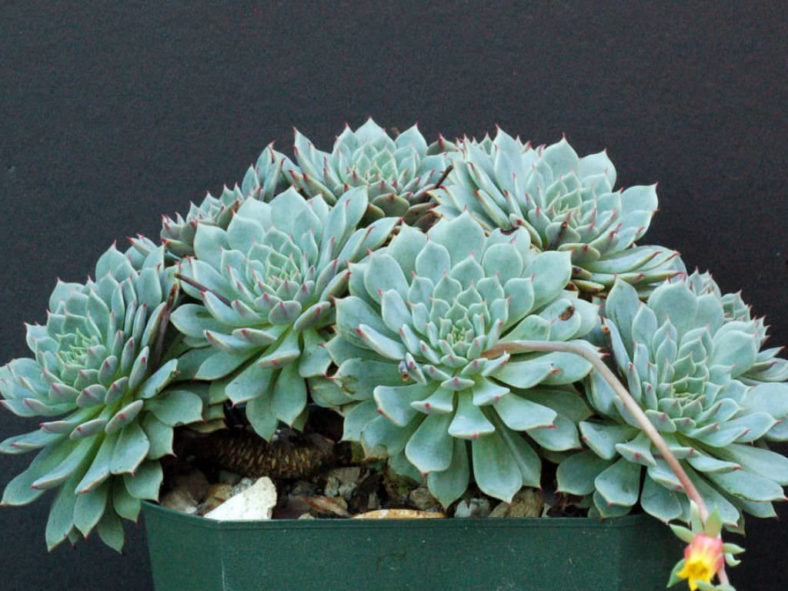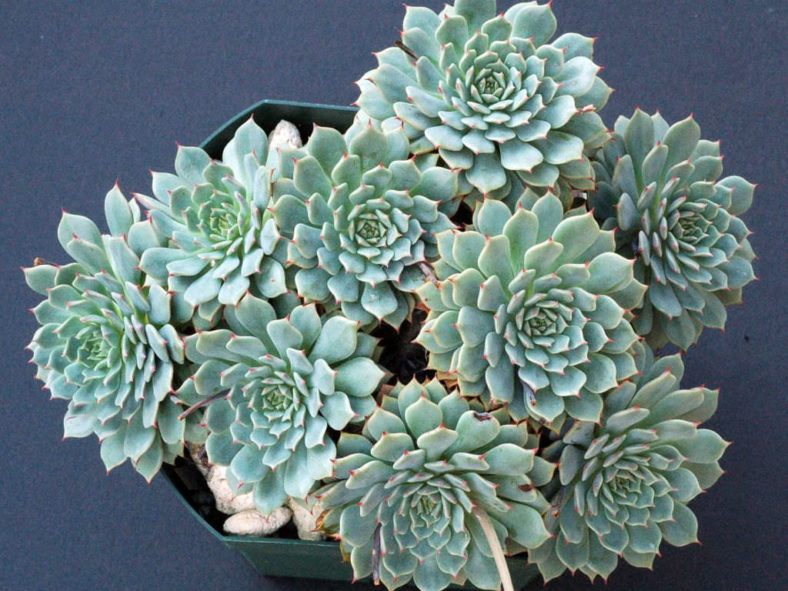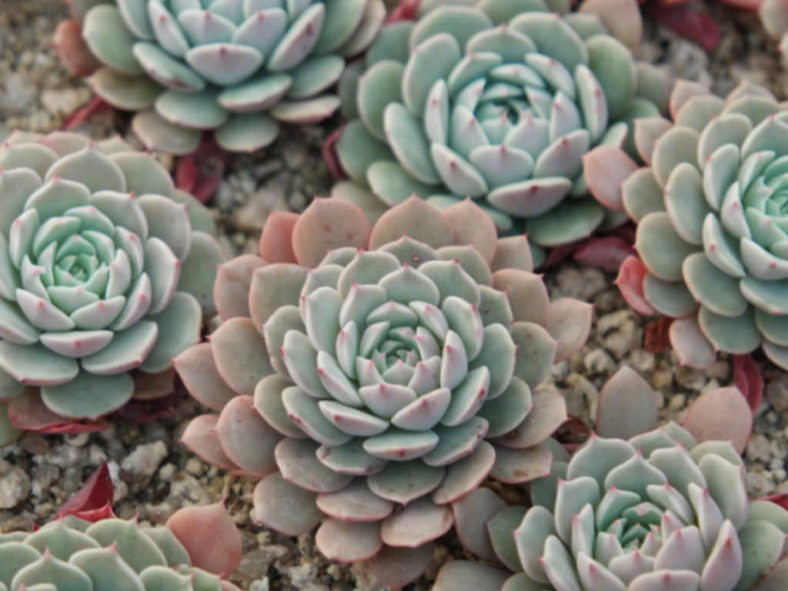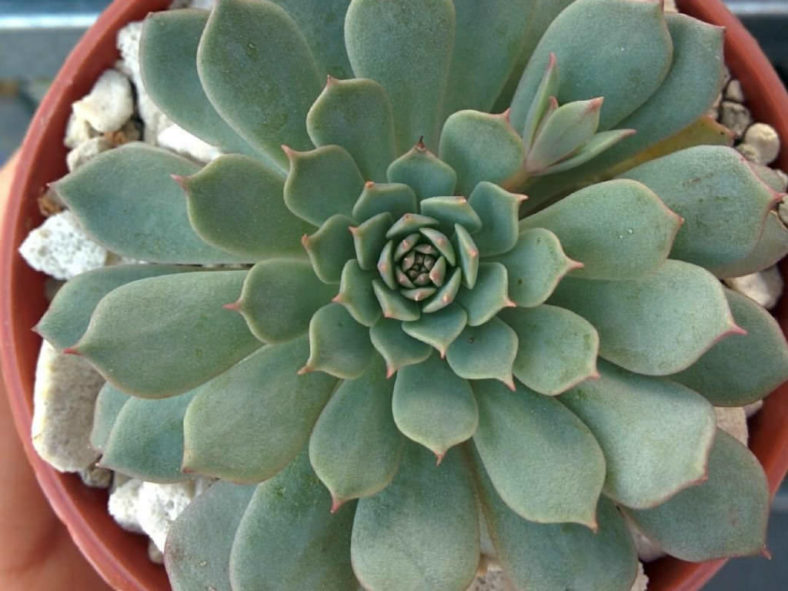Scientific Name
Echeveria 'Pinwheel'
Synonym(s)
Echeveria secunda 'Pinwheel', Echeveria 'Tuxpan'
Scientific Classification
Family: Crassulaceae
Subfamily: Sempervivoideae
Tribe: Sedeae
Genus: Echeveria
Origin
Echeveria 'Pinwheel' is not a hybrid but a not-yet-described species from Tuxpan, Michoacán, Mexico. It was distributed in 1984 as Echeveria secunda 'Pinwheel'.
Description
Echeveria 'Pinwheel' is a small succulent plant that forms rosettes of spoon-shaped, icy blue leaves marked with red near the tips. The rosettes can reach a diameter of 2.6 inches (6.5 cm) and produce offsets, forming a dense clump over time.
The flowering stalks, which can grow up to 1 foot (30 cm) long, branch and arch over, bearing small bell-shaped flowers that are watermelon pink in the lower half and yellow above.
Cultivars and Hybrids of Echeveria 'Pinwheel'

Hardiness
USDA hardiness zone 9b to 11b: from 25°F (-3.9°C) to 50°F (10°C).
How to Grow and Care
Most common Echeveria species are not complicated succulents to grow, provided you follow a few basic rules. First, be careful never to let water sit in the rosette, as it can cause rot or fungal diseases that will kill the plant. Additionally, remove dead leaves from the bottom of the plant as it grows. These dead leaves provide a haven for pests, and Echeverias are susceptible to mealy bugs. Finally, as with all succulents, maintaining careful watering habits and providing ample light will help ensure success.
Most Echeveria can be easily propagated from leaf cuttings, although a few are better propagated from seeds or stem cuttings. To propagate a leaf cutting, place the individual leaf in a succulent or cacti mix and cover the dish until the new plant sprouts.
Repot as needed, preferably during the warm season. To repot a succulent, ensure the soil is dry before repotting, then gently remove the pot. Knock away the old soil from the roots, removing any rotted or dead roots. Treat any cuts with a fungicide.
See more at How to Grow and Care for Echeveria.
Links
- Back to genus Echeveria
- Succupedia: Browse succulents by Scientific Name, Common Name, Genus, Family, USDA Hardiness Zone, Origin, or cacti by Genus
Photo Gallery
Click on a photo to see a larger version.


